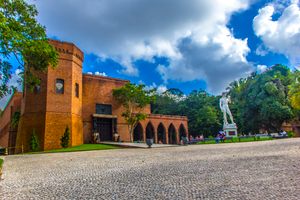About
In the center of the city of Recife on the banks of the Capibaribe river stands a haunting sculpture that depicts a man undergoing excruciating torture. This sculpture was created by the artist and architect Demetrio Albuquerque and serves as a memorial to the victims of torture and oppression of the three-decade-long Brazilian military dictatorship.
It is estimated that over 20,000 people were tortured by the military and secret police agencies (the ABIN and the SNI) during the decades of the Brazilian dictatorship (1964-1985). Many of those tortured were activists involved in fighting the dictatorship through acts of armed or non-violent resistance. People could be arrested and subjected to hours, days, weeks, or months of torture for as little as having been heard criticizing the regime.
The Brazilian military and secret police were trained extensively in methods of interrogation and torture primarily by the CIA both in Brazil and abroad in the notorious "School of the Americas" in Panama (a U.S. Army training center) and then in the United States at Fort Benning in Georgia.
CIA and US military instructors taught Brazilian students the horrific techniques that had been observed to have had the most "success" in breaking down the psychological resistance of prisoners captured in wars such as Korea and Vietnam. Advisors from the U.K. military also traveled to Brazil on several occasions in order to conduct seminars and training workshops to impart "knowledge" that had been gained from the psychological torture of IRA prisoners in the Northern Irish conflict.
The terrifying torture methods that were used on prisoners included but were not limited to sleep and sensory deprivation, starvation, rape and sexual abuse, electrocution, beatings, the burning of cigarettes on skin and even the insertion of starved rats into orifices. The most common method of torture was the pau-de-arara ("the wood of the macaw"), which involved suspending someone tied by their wrists and the back of their knees from a horizontal metal pole for days while they were physically beaten.
The sculpture Monument Tortura Nunca Mais (Torture No More) portrays one of the many thousands of victims of the dictatorship who is being tortured on the "pau-de-arara" for his opposition to the regime.
Related Tags
Know Before You Go
The sculpture can be seen for free and is found on the Rua de Aurora street.
Community Contributors
Added By
Published
November 30, 2021






















